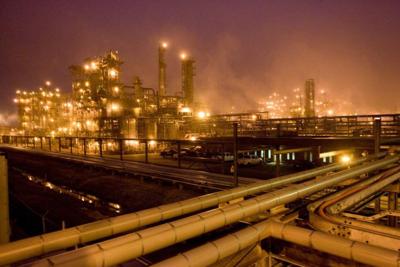
One of the two men killed in industrial accidents at Ascension Parish chemical plants this month died from exposure to hydrofluoric acid, and the other died after being exposed to what is suspected to be nitrogen gas, State Police said Wednesday.
Dexter Armstead, 48, died at Our Lady of the Lake Regional Medical Center one day after the suspected nitrogen exposure on Oct. 15 at BASF’s Geismar complex off La. 30, a State Police summary said.
Jason DeRousselle, 51, died at Baton Rouge General Hospital after his exposure on Oct. 21 to hydrofluoric acid at the Honeywell Geismar complex in Carville off La. 3115, the summary said.
Both men were from Prairieville.
Separately, another unidentified contract worker at BASF was exposed to toluene diisocyanate on the evening of Oct. 21 and was taken to Baton Rouge General for evaluation after complaining of respiratory problems, a DEQ report says.
State Police, the state Department of Environmental Quality and the U.S. Occupational Safety and Health Administration continue to investigate incidents, the agencies have said.
State Police is the lead agency on hazardous incidents. OSHA usually sends its investigators to incidents that have resulted in severe injury or death among workers.
Until Wednesday, information on the deaths had been in short supply, including what chemicals had been released and the identity of the workers killed in the incidents.
Hydrofluoric acid is a potent chemical that, if inhaled in high enough concentrations, can cause respiratory problems, including pulmonary edema. Contact with the skin can cause severe burns that can cause ulcers, according to federal health advisories.
DeRousselle was exposed at Honeywell due to a leak in valve gasket, a DEQ report says. State Police says it is still investigating the cause of the release.
Mike Hockey, a Honeywell spokesman, said Wednesday that the company is continuing mourn the loss of one of its workers.
“Our thoughts and sympathies are with his family, friends and loved ones, and we are assisting the family during this difficult time,” Hockey said.
Nitrogen is an inert gas that makes up 78% of the atmosphere on the planet and is typically safely inhaled.
If nitrogen was, in fact, what was released at BASF in the earlier, Oct. 15 incident, it wasn’t clear from the State Police summary or the DEQ report how the nitrogen exposure led to Armstead’s death or what led to the brief hospitalization of another worker at BASF.
That worker, who has not been identified, was placed under observation for several hours and later released, troopers said.
State hazardous material officials said they are still trying to nail down the nature of the release at BASF on Oct. 15. They had initially been told the release involved both nitrogen and chlorobenzene.
“Preliminary investigation revealed chlorobenzene was not involved and confirmation on nitrogen’s involvement is still being investigated,” the summary from troopers says.
The DEQ report also identifies the Oct. 15 release at BASF as nitrogen gas.
Chlorobenzene is a colorless liquid solvent that, in acute exposures, can attack the nervous system.
Both people exposed to the suspected nitrogen worked for a contractor at BASF, the Zachary Group. The company had not previously identified the employees in a statement but expressed officials’ condolences and the willingness to work with the pending investigations.
The Zachary Group contractors had been installing equipment at BASF’s methylene diphenyl diisocyanate unit, also known as MDI, as part of a “turnaround” job, the DEQ report says.
A “turnaround” is industry lingo for any kind of long-term maintenance work that can lead to a slowdown or halt in production while equipment is repaired or replaced. While BASF has contract workers on site on a regular basis, contractors also are often brought in to add to manpower during a turnaround.
MDI is a raw material for polyurethanes, insulating foams and adhesives, BASF says.
The Oct. 21 incident at BASF happened in a different unit of the large complex.
The DEQ reports on the BASF and Honeywell incidents were made public late Tuesday or early Wednesday in an agency database.
*Original article online at https://www.theadvocate.com/baton_rouge/news/article_b16a07e4-3741-11ec-b196-57f4e4cd99ec.html
